《管理会计 英文版 第8版》
| 作者 | (美)雷·H.加里森(RayH.Garrison),(美)埃 编者 |
|---|---|
| 出版 | 沈阳:东北财经大学出版社;McGraw-Hill出版公司 |
| 参考页数 | 859 |
| 出版时间 | 1998(求助前请核对) 目录预览 |
| ISBN号 | 7810444557 — 求助条款 |
| PDF编号 | 89817468(仅供预览,未存储实际文件) |
| 求助格式 | 扫描PDF(若分多册发行,每次仅能受理1册) |
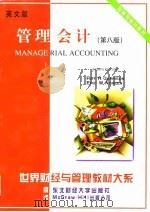
1 Manager?al Accounting and the Business Environment2
Planning4
The Work of Management and the Need for Managerial Accounting lnformation4
Controlling5
Directing and Motivating5
The End Results of Manogers Activities6
Comparison of Financial and Managerial Accounting7
The Planning and Control Cycle7
Generally Accepted Accounting Principles(GAAP)8
Segments of an Organization8
Emphasis on the Future8
Relevance and Flexibility of Data8
Less Emphasis on Precision8
Expanding Role of Managerial Accounting9
Managerial Accounting-Not Mandatory9
Just-in-Time(JIT)10
The Changing Business Environment10
Total Quality Management(TQM)15
Process Reengineeting18
The Theory of Constraints(TOC)20
Automation20
Infernational Competition23
Decentralization24
Organizational Structure24
Line and Staff Relationships25
Professional Ethics26
The Controller26
Company Codes of Conduct27
Code of Conduct for Management Accountants27
Codes of Conduct on the International Level29
Summary30
The Certified Management Accountant(CMA)30
Key Terms for Review31
Exercises33
Questions33
Problems35
Group Exercises38
PART 1 THE FOUNDATION:Cost Behowior,and Systems Design41
2 Cost Terms,Concepts,and Classifications42
General Cost Classifications44
Manufacturing Costs45
Nonmanufacturing Costs46
Product Costs47
Period Costs47
Period Costs versus Product Costs47
Cost Classifications on Financial Statements48
The Balance Sheel49
The lncome Statement50
Schedule of Cost of Goods Manufactured51
Product Costs-A Closer Look52
An Example of Cost Flows54
Inventoriable Costs54
Cost Classifications for Predicling Cost Behavior55
Variable Cost56
Fixed Cost57
Indirect Cost58
Direct Cost58
Cost Classifications for Assigning Costs to Cost Objects58
Differential Cost and Revenue59
Cost Classifications for Decision Making59
Oppartunity Cost60
Summary61
Sunk Cost61
Review Problem 1:Cost Terms62
Review Problem2:Schedule of Cost of Goods Manufactured and Income Statement63
Key Terms for Review64
Appendix 2A:Further Classification of Labor Costs65
Questions67
Exercises68
Problems71
Cases78
Group Exercises79
3 Systems Design:Job-Order Costing82
Process Costing84
Types of Costing Systems84
The Need for Unit Product Cost Data84
Job-Order Costing85
Job-Order Costing-An Overview86
Summary of Costing Methods86
Measuring Direct Materials Cost87
Job Cost Sheet88
Measuring Direct Labor Cost89
Application of Manufacturing Overhead90
Computation of Unit Costs93
Choice of an Allocation Base for Overhead Cost93
The Purchase and Issue of Materials95
Job-Order Costing-The Flow of Costs95
Summary of Document Flows95
Manufacturing Overhead Costs98
Labor Cost98
The Application of Manufacturing Overhead99
Cost of Goods Manufactured101
Nonmanufacturing Costs101
Summary of Cost Flows102
Cost of Goods Sold102
Underapplied and Overapplied Overhead106
Problems of Overhead Application106
Disposition of Under-or Overapplied Overhead Balances107
A General Model of Product Cost Flows108
Multiple Predetermined Overhead Rates109
Use of Bar Code Technology110
Job-Order Costing in Service Companies110
Review Problem:Job-Order Costing112
Summary112
Questions115
Key Terms for Review115
Exercises116
Problems121
Coses132
Group Exercises135
4 Systems Design:Process Costing138
A Perspective of Process Cost Flows141
Differences between Job-Order and Process Costing141
Comparison of Job-Order and Process Costing141
Similarities between Job-Order and Process Costing141
Processing Departments142
The Flow of Mafterials,Labor,and Overhead Costs143
Materials,Labor,and Overhead Cost Entries144
Equivalent Units of Production147
Weighted-Average Method148
Production Report-Weighted-Average Method149
Step2:Compute the Total and Unit Costs151
Step1:Prepare a Quanlity Schedule and Compute the Equivalent Units151
Step3:Prepare a Cost Reconciliation152
A Comment about Rounding Errors154
Operation Costing155
Review Problem:Process Cost Flows and Reports156
Summary156
Key Terms for Review158
Appendix 4A:FIFO Method159
Questions165
Exercises166
Problems169
Cases175
Group Exercises176
5 Systems Design:Activity-Based Costing and Quality Management178
Level One:Plantwide Overhead Rate180
The Concept of Activity-Based Costing180
Level Two:Deparlmental Overhead Rates181
Level Three:Activity-Based Costing182
Process Value Analysis(PVA)183
Design of an Activity-Based Costing System183
Idenlifying Activily Centers185
Assigning Costs to Activity Centers187
Graphic Example of Activity-Based Costing188
Selecting Cost Drivers188
Numerical Example of Activity-Based Costing190
Comtek Sound,Inc.′s Basic Data191
Activities as a Base192
Direct labor-Hours as a Base192
Benefits of Activity-Based Costing196
Benefits and Limitations of Activity-Based Costing196
Limitations of Activity-Based Costing197
International Use of Activity-Based Costing199
Activity-Based Costing and Service Industries199
Quality of Design200
Grade200
Quality Management200
Quality of Conformance-A Closer Look202
Quality of Confo?mance202
Prevention Costs203
Internal Failure Costs204
Appraisal Costs204
External Failure Costs205
Distribution of Quality Costs206
Quality Cost Reports207
Use of Quality Cost Information208
Quality Cost Reports in Graphic Form208
International Aspects of Quality209
The ISO 9000 Standards210
Review Problem:Activity-Based Costing211
Summary211
Key Terms for Review213
Appendix 5A:Cost Flows in an Activity-Based Costing System214
Questions217
Exercises219
Problems224
Cases233
Group Exercises237
6 Cost Behavior:Analysis and Use238
Types of Cost Behayior Patterns240
Variable Costs241
True Variable Versus Step-Variable Costs242
Fixed Costs244
The Linearity Assumption and the Relevant Range244
Types of Fixed Costs245
the Trend toward Fixed Costs247
Fixed Costs and the Relevant Range248
Mixed Costs249
The Analysis of Mixed Costs251
The High-Low Method253
The Scattergraph Method255
The Least-Squares Regression Method257
The Use of Judgment in Cost Analysis258
The Contribution Format259
Engineering Approach to Cost Study259
Multiple Regression Analysis259
Summary260
The Contribution Approach260
Why a New Income Statement Format?260
Review Problem1:Cost Behavior261
Key Terms for Review262
Review Problem2:High-Low Methad262
Appendix 6A:Least-Squares Regression Calculations263
Questions265
Exercises266
Problems268
Cases274
Group Exercises275
PART 11 THE CENTRAL THEME:Planning and Control277
7 Cost-Volume-Profit Relationships278
Contribution Margin281
The Basics of Cost-Volume-Profit(CVP)Analysis281
Contribution Margin Ratio (CM Ratio)283
Some Applications of CVP Concepts284
Importance of the Contribution Margin287
Break-Even Computations288
Break-Even Analysis288
CVP Relationships in Graphic Form290
Target Net Profit Analysis293
The Margin of Safety295
Cost Structure and Profit Stability296
CVP Considerations in Choosing a Cost Structure296
Operating Leverage298
Automation:Risks and Rewards from c CVP Perspective300
Structuring Sales Commissions301
Sales Mix and B?eak-Even Analysis302
The Definition of Sales Mix302
The Concept of Sales Mix302
Assumptions of CVP Analysis304
Sales Mix and per Unit Contr?bution Margin304
Review Problem:CVP Relationships305
Summary305
Key Terms for Review307
Questions308
Exercises309
Problems311
Cases319
Group Exercises322
8 Variable Costing:A Tool for Management324
Variable Costing326
Absorption Costing326
Overvlew of Absorption and Variable Costing326
Unit Cost Computations327
Income Comparison of Absorption and Variable Costing328
The Controversy over Fixed Overhead Cost328
The Definition of an Asset330
Extended Comparison of Income Data331
Absorption Costing335
Variable Costing335
Effect of Changes in Production on Net Income335
The Impact on the Manager338
CVP Analysis and Absorption Costing339
Other Factors in Choosing a Costing Method339
External Reporting and Income Taxes340
Pricing Decisions340
Advantages of the Contribution Approach341
Impact of JIT Inventory Methods342
Variable Costing and the Theory of Constraints342
Review Problem343
Summary343
Questions345
Key Terms for Review345
Exercises346
Problems348
Cases352
Group Exercises356
9 Profit Planning358
Difference Between Planning and Control360
Personol budgets360
The Basic Framework of Budgeting360
Definition of Budgeting360
Advantages of Budgeting361
Responsibility Accounting362
Choosing a Budget Period363
The Matter of Human Relations365
The Budget Committee366
The Master Budget-A Network of Interrelationships367
Sales Forecasting-A Critical Step368
Preparing the Master Budget369
The Production Budget371
The Sales Budgei371
The Direct Maferials Budget373
Inventory Purchases-Merchandising Firm373
The Direct Labor Budge?374
The Manufacturing Overhead Budget375
The Selling and Administrative Expense Budget376
The Ending Finished Goods Inventory Budget376
The Cash Budget377
The Budgeted Income Statement378
The Budgeted Balance Sheet380
Expanding the Budgeted Income Statement381
JIT Purchasing383
Zero-Base Budgeting384
International Aspec s of Budgeting385
Review Problem:Budget Schedules386
The Need for Further Budgeting Material386
Key Terms for Review388
Appendix 9A:Economic Order Quanfity(EOQ) and the Reorder Point389
Exercises396
Questions396
Problems399
Cases409
Group Exercises412
10 Standard Costs and Operating Performance Measures414
Standard Costs-Management by Exception416
Setting Standard Costs417
Who Uses Standard Costs?417
Ideal Versus Practical Standards418
Setting Direct Materials Standards419
Setting Variable Manufacturing Overhead Standards421
Setting Direct Labor Standards421
Advantages of Standard Costs422
Are Standards the Same as Budgets?422
Price and Quantity Variances423
A General Model for Variance Analysis423
Disadvantages of Standard Costs423
Using Standard Costs—Direct Materials Variances425
Materials Price Variance—A Closer Look426
Materials Quantity Variance—A Closer Look428
Labor Rate Variance —A Closer Look429
Using Standard Costs—Direct Labor Variances429
Labor Efficiency Variance—A Closer Look430
Manufacturing Overhead Variance—A Closer Look431
Using Standard Costs—Variable Manufacturing Overhead Variances431
Structure of Performance Reports434
Variance Analysis and Management by Exception435
Standard Costs and the New Competitive Environment436
Operating Performance Measures436
New Performance Measures437
Quality Control Measures438
Inventory Control Measures439
Material Control Measures439
Machine Performance Measures440
Delivery Performance Measures441
International Uses of Standard Costs443
Standard Costs and Operating Performance Measures443
Summary444
Review Problem:Standard Costs445
Key Terms for Review446
Appendix 10A:General Ledger Entries to Record Variances448
Exercises449
Questions449
Problems452
Cases462
Group Exercises465
11 Flexible Budgets and Overhead Analysis468
Deficiencies of the Static Budget470
Characteristics of a Flexible Budget470
Flexible Budgets470
How the Flexible Budget Works472
The Measure of Activity—A Critical Choice473
The Problem of Budget Allowances474
The Overhead Performance Report—A Closer Look474
Spending Variance Alone475
Both Spending and Efficiency Variances477
Expanding the Flexible Budget478
Activity-Based Costing and the Flexible Budget479
Fixed Costs and the Flexible Budget479
Overhead Rates and Fixed Overhead Analysis481
Flexible Budgets and Overhead Rates482
Overhead Applications in a Standard Cost System483
The Budget Variance—A Closer Look484
The Fixed Overhead Variances484
The Volume Variance—A Closer Look485
Graphic Analysis of Fixed Overhead Variances486
Overhead Variances and Under-or Overapplied Overhead Cost487
Cautions in Fixed Overhead Analysis487
Presentations of Variances on the Income Statement488
Review Problem:Overhead Analysis489
Questions491
Key Terms for Review491
Exercises492
Problems495
Cases503
Group Exercises507
12 Segment Reporting,Profitability Analysis,and Decentralizotion510
Hindrances to Proper Cost Assignment512
Inappropriate Methods for Allocating Costs among Segments513
Omission of Costs513
Arbitrarily Dividing Common Costs among Segments514
Levels of Segmented Statements517
Segment Reporting and Profitability Analysis517
Sales and Contribution Margin518
Assigning Costs to Segments518
Traceable and Common Fixed Costs520
Traceable Costs Can Become Common Costs521
Segment Margin522
Customer Profitability Analysis523
Varying Breakdowns of Total Sales523
Decentralization and Segment Reporting525
Responsibility Accounting525
Cost,Profit,and Investment Centers526
The Return on Investment (ROI) Formula528
Rate of Return for Measuring Managerial Performance528
Measuring Management Performance528
Net Operating Income and Operating Assets Defined529
Plant and Equipment:Net Book Value or Gross Cost?530
Controlling the Rate of Return531
Reduce Operating Assets532
Reduce Expenses532
Increase Sales532
The Proplem of Allocated Expenses and Assets533
Residual Income—Another Measure of Performance534
Criticisms of ROI534
Motivation and Residual Income535
Divisional Comparison and Residual Income536
Review Problem 1:Segmented Statements537
Summary537
Review Problem 2:Return on Investment (ROI) and Residual Income538
Key Terms for Review539
Appendix 12A:Transfer Pricing540
Review Problem 3:Transfer Pricing549
Questions551
Exercises552
Problems556
Cases569
Group Exercises571
PART Ⅲ THE CAPSTONE:Using Cost Data in Decision Making573
13 Relevant Costs for Decision Making574
Identifying Relevant Costs576
Cost Concepts for Decision Making576
Sunk Costs Are Not Relevant Costs577
Different Costs for Different Purposes577
Book Value of Old Equipment578
Future Costs that Do Not Differ Are Not Relevant Costs580
Why Isolate Relevant Costs?582
An Example of Irrelevant Future Costs582
Adding and Dropping Product Lines and Other Segments583
An Illustration of Cost Analysis584
Beware of Allocated Fixed Costs586
A Comparative Format586
The Make or Buy Decision588
Strategic Aspects of the Make or Buy Decision589
An Example of Make or Buy590
The Matter of Opportunity Cost591
Special Orders592
Contribution in Relation to Scarce Resources593
Utilization of Scarce Resources593
Managing Constraints595
Joint Product Costs and the Contribution Approach596
The Problem of Multiple Constraints596
Sell or Process Further Decisions597
The Pitfalls of Allocation597
Activity-Based Costing and Relevant Costs599
Review Problem:Relevant Costs600
Summary600
Key Terms for Review601
Questions602
Exercises603
Problems607
Cases615
Group Exercises620
14 Capital Budgeting Decisions622
Capital Budgeting—An Investment Concept624
Characteristics of Business Investments625
Typical Capital Budgeting Decisions625
The Net Present Value Method Illustrated626
Discounted Cash Flows—The Net Present Value Method626
Emphasis on Cash Flows628
Recovery of the Original Investment629
Choosing a Discount Rate630
Simplifying Assumplions630
An Extended Example of the Net Present Value Mathod631
The Internal Rate of Return Method Illustrated632
Discounted Cash Flows—The Internal Rate of Return Method632
Salvage Value and Other Cash Flows633
The Cost of Capital as a Screening Tool634
Using the Internal Rate of Return634
The Process of Interpolation634
Comparison Of The Net Present Volue and the Internral Rate of Return Methods635
The Total-Cost Approach636
Expanding the Net Present Value Method636
The Incremental-Cost Approach638
Least-Cost Decisions639
Investments in Automated Equipment640
Capital Budgeting and Nonprofit Organizations640
Benefits from Automation641
Decision Framework for Intangible Benefits642
The Payback Method643
Other Approaches to Capital Budgeting Decisions643
Evaluation of the Payback Method644
An Extended Example of Payback645
The Simple Rate of Return Method646
Payback and Uneven Cash Flows646
The Choice of an Investment Base648
Criticisms of the Simple Rate of Return648
Postaudit of Investment Projects649
Summary650
Review Problem 1:Basic Present Value Computations651
Review Problem 2:Comparison of Capital Budgeting Methods652
Key Terms for Review653
Appendix 14A:The Concept of Present Value654
Appendix 14B:Inflation and Capital Budgeting658
Appendix 14C:Future Value and Present Value Tables660
Questions662
Exercises663
Problems666
Cases675
Group Exercises678
15 Forther Aspects Opvestment Decisions680
Income Taxes and Capital Budgeting682
The Concepi of After-Tax Cost683
The Concept of Depreciation Tax Shield685
Modified Accelerated Cost Recovery System686
The Choice of a Depreciation Method691
Example or Income Taxes and Capital Budgeting692
The Total-Cost Approach and Income Taxes694
Net Present Valve Method697
Internal Rate of Return Method697
Preference Decisions—The Ranking of Investment Projects697
Companng the Preference Rules698
Summary699
Review Problem:Capital Budgeting and Taxes700
Questions701
Key Terrrs for Review701
Exercises702
Problems704
Cases711
Group Exercises713
Part IV SELECTED TOPICS FOR FURTHER STUDY717
16 Service Department Costing:An Activity Approach718
Selecling Allocation Bases720
Guidelines for Cost Allocation720
The Need for Cost Allocation720
Interdepartmental Services722
Allocating Costs by Behavior727
Pitfalls in Allocaling Fixed Costs728
Effect of Allocations on Operating Departments729
Should Actual oBudgeted Costs Be Allocated?729
Basic Allocation Techniques731
Implementing the Allocation Guidelines731
A Summary of Cost Allocation Guidelines731
An Extended Example733
Should All Costs Be Allocated?735
No Distinction Made between Fixed and Variable Costs735
Beware of Sales Dollars as an Allocation Base736
Summary737
Review Problem:Direct and Step Methods738
Key Terms for Review739
Exercises740
Questions740
Problems742
Cases747
Group Exercises749
17 How Well Am I Doing2 Stctement of Cash Flows752
Constructing the Statement of Cash Flows Using Changes in Noncash Balance Sheet Accounts755
Definition of Cash755
The Basic Approach to a Statement of Cash Flows755
Constructing a Simplified Statement of Cash Flows757
An Example of a Simplified Statement of Cash Flows757
Depreciation,Depletion,and Amortization758
Investing Activities760
Operating Activities760
The Need for a More Detailed Statement760
Organization of the Full-Fledged Statement of Cash Flows760
Other Issues in Preparing the Statement of Cash Flows761
Financing Activities761
Direct Exchange Transactions762
Operating Activities:Direct or Indirect Method?762
Eight Basic Steps to Preparing the Statement of Cash Flows763
An Example of a Full-Fledged Statement of Cash Flows763
Setting Up the Worksheet (Steps 1-4)765
Adjustments to Reflect Gross,Rather Than Net ,Amounts (Step 5)766
The Completed Statement of Cash Flows (Steps 7 and 8)767
Classifying Entries as Operating,Investing,or Financing Activities (Step ó)767
Interpretation of the Statement of Cash Flows769
Summary770
Review Problem770
Key Terms for Review772
Appendix 17A:The Direct Method of Determining the Net Cash Provided by Operating Activities772
Questions774
Exercises775
Problems778
Group Exercises784
18 How Well Am I Doing? Financial Statement Analysis786
Limitations of Financial Statement Analysis788
Comparison of Financial Data788
The Need to Look beyond Ratios788
Dollar and Percentage Changes on Statements789
Statements in Comparative and Common-Size Form789
Common-Size Statements792
Ratio Analysis—The Common Stockholder794
Earnings per Share794
Extraordinary ltems and Earnings per Share795
Fully Diluted Earnings per Share796
Price-Earnings Ratio797
Dividend Payout and Yield Ratios797
Return on Total Assets798
Return on Common Stockholders Equity799
Financial Leverage800
Book Value Per Share801
Ratio Analysis—The Short-Term Creditor802
Working Capital802
Current Ratio803
Acid-Test (Quick)Ratio804
Accounts Receivable Turnover804
Inventory Turnover805
Ratio Analysis—The Long-Term Creditor806
Times Interest Earned Ratio806
Debt-to-Equity Ratio807
Summary of Ratios and Sources of Comparative Ratio Data808
Summary809
Review Problem:Selected Ratios and Financial Leverage809
Key Terms for Review812
Questions812
Exercises813
Problems816
Group Exercises826
Appendix Pricing Products and Services828
Cost-Plus Pricing830
The Absorption Approach830
The Contribution Approach832
Determining the Markup Percentage832
Markup on an Absorption Basis833
Markup on a Contribution Basis834
Target Costing834
Reasons for Using Target Costing836
An Example of Target Costing836
Material Component837
Time Component837
An Example of Time and Material Pricing837
Service Companies—Time and Material Pricing837
Key Terms for Review838
Questions839
Exercises839
Problems840
Photo Credits845
Author Index847
Company Index849
Subject Index851
1998《管理会计 英文版 第8版》由于是年代较久的资料都绝版了,几乎不可能购买到实物。如果大家为了学习确实需要,可向博主求助其电子版PDF文件(由(美)雷·H.加里森(RayH.Garrison),(美)埃 1998 沈阳:东北财经大学出版社;McGraw-Hill出版公司 出版的版本) 。对合法合规的求助,我会当即受理并将下载地址发送给你。
高度相关资料
-
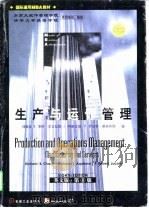
- 生产与运作管理 英文版·第8版
- 1998 北京:机械工业出版社
-

- 生产与运作管理:英文版·第8版
- 1998年07月第1版
-
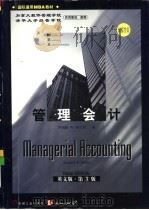
- 管理会计:第3版:英文版
- 1998年07月第1版 机械工业出版社
-
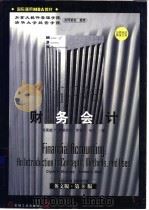
- 财务会计:英文版·第8版
- 1998年07月第1版 机械工业出版社
-
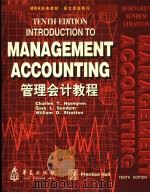
- 管理会计教程 英文版·第10版
- 1998 华夏出版社
-

- 基础会计原理 英文版 第14版
- 1998 沈阳:东北财经大学出版社;McGraw-Hill出版公司
-

- 会计学 英文版 第18版
- 1998 沈阳:东北财经大学出版社
-
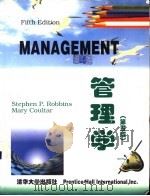
- 管理学 第5版英文版
- 1997 北京:清华大学出版社
-
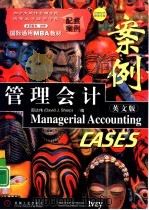
- 管理会计案例 英文版
- 1998 北京:机械工业出版社
-
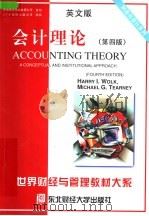
- 会计理论 英文版 第4版
- 1998 沈阳:东北财经大学出版社
-
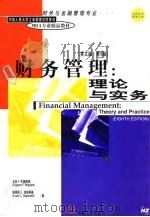
- 财务管理 理论与实务 英文版·第8版
- 1999 北京:机械工业出版社
-
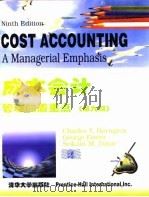
- 成本会计 管理的着重点 第9版 英文版
- 1997 北京:清华大学出版社
-
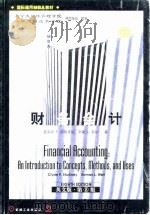
- 财务会计 英文版 第8版
- 1998 北京:机械工业出版社
-

- 人体中的“石头”
- 1999 北京:科学出版社
提示:百度云已更名为百度网盘(百度盘),天翼云盘、微盘下载地址……暂未提供。➥ PDF文字可复制化或转WORD
